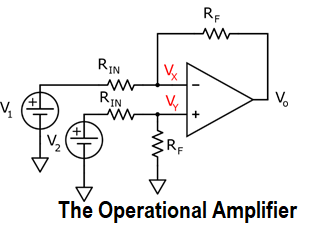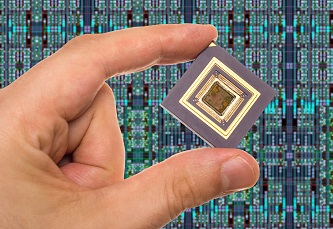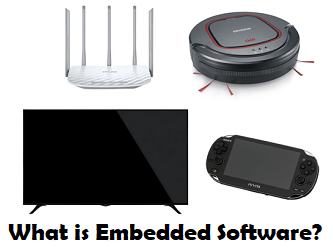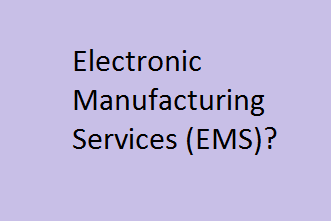This website uses cookies so that we can provide you with the best user experience possible. Cookie information is stored in your browser and performs functions such as recognising you when you return to our website and helping our team to understand which sections of the website you find most interesting and useful.
Embedded Systems Software
Embedded Systems Software: A Comprehensive Guide
Embedded systems software is a crucial component of modern technology, powering everything from household appliances to complex industrial machines. This article delves into the intricacies of embedded systems software, exploring its definition, architecture, development processes, and applications. Whether you are a student, a professional, or simply curious about the field, this guide will provide you with valuable insights.
What is Embedded Systems Software?
Embedded systems software refers to specialized programming designed to control devices that are not typically considered computers. These systems are embedded within larger systems and perform dedicated functions. Unlike general-purpose software, embedded software is tailored for specific hardware and is often constrained by resource limitations such as memory, processing power, and energy consumption.
Characteristics of Embedded Systems Software
- Real-time Operation: Many embedded systems require real-time processing, meaning they must respond to inputs or events within a strict time frame.
- Resource Constraints: Embedded systems often operate with limited memory and processing capabilities, necessitating efficient coding practices.
- Reliability: Given their critical roles in applications like medical devices and automotive systems, embedded software must be highly reliable.
- Specific Functionality: Unlike general-purpose software, embedded systems software is designed for specific tasks, which can range from simple control functions to complex algorithms.
Architecture of Embedded Systems
The architecture of embedded systems can be broadly categorized into two types: hardware architecture and software architecture.
Hardware Architecture
Embedded systems typically consist of a microcontroller or microprocessor, memory, input/output interfaces, and sometimes additional components like sensors and actuators. The choice of hardware significantly influences the software design.
Software Architecture
Embedded software architecture can be divided into several layers:
- Application Layer: This layer contains the application code that performs the specific tasks of the embedded system.
- Middleware Layer: Middleware provides services such as communication and data management, facilitating interaction between the application and hardware layers.
- Hardware Abstraction Layer (HAL): HAL abstracts the hardware details, allowing the software to interact with the hardware without needing to know its specifics.
- Device Drivers: Device drivers are specialized software components that allow the operating system to communicate with hardware devices.
Development Process of Embedded Systems Software
The development of embedded systems software involves several stages, each critical to ensuring the final product meets its requirements.
1. Requirements Analysis
The first step in the development process is to gather and analyze the requirements of the embedded system. This includes understanding the functionality, performance, and constraints of the system.
2. System Design
Once the requirements are clear, the next step is to design the system architecture. This includes selecting the appropriate hardware and software components and defining the interactions between them.
3. Implementation
During the implementation phase, developers write the code for the embedded system. This often involves using programming languages such as C, C++, or assembly language, depending on the system's requirements.
4. Testing and Debugging
Testing is a critical phase in embedded systems development. It involves verifying that the software meets the specified requirements and identifying any bugs or issues. Debugging tools and techniques are employed to ensure the software operates correctly.
5. Deployment
After successful testing, the embedded software is deployed to the target hardware. This may involve flashing the software onto a microcontroller or integrating it into a larger system.
6. Maintenance and Updates
Post-deployment, the software may require updates or maintenance to fix bugs, improve performance, or add new features. This phase is essential for ensuring the longevity and reliability of the embedded system.
Programming Languages for Embedded Systems
Several programming languages are commonly used in embedded systems development, each with its advantages and disadvantages.
C Language
C is the most widely used programming language for embedded systems due to its efficiency and control over hardware. It allows developers to write low-level code that can directly manipulate hardware components.
C++ Language
C++ is an extension of C that supports object-oriented programming. It is used in more complex embedded systems where modularity and code reuse are essential.
Assembly Language
Assembly language is used for programming at a very low level, providing direct control over hardware. It is often used in performance-critical applications where efficiency is paramount.
Python and Other High-Level Languages
While not as common in traditional embedded systems, high-level languages like Python are gaining popularity, especially in prototyping and development environments where rapid development is needed.
Real-Time Operating Systems (RTOS)
Many embedded systems require real-time capabilities, which is where Real-Time Operating Systems (RTOS) come into play. An RTOS is designed to manage hardware resources and execute tasks within strict timing constraints.
Features of RTOS
- Deterministic Behavior: RTOS provides predictable response times, essential for real-time applications.
- Task Scheduling: RTOS manages multiple tasks, ensuring that high-priority tasks receive the necessary CPU time.
- Inter-Task Communication: RTOS facilitates communication between tasks, allowing them to share data and synchronize their operations.
Popular RTOS Examples
- FreeRTOS: A widely used open-source RTOS suitable for microcontrollers.
- VxWorks: A commercial RTOS known for its reliability and performance in critical applications.
- RTEMS: An open-source RTOS designed for embedded systems with real-time requirements.
Applications of Embedded Systems Software
Embedded systems software is ubiquitous, with applications spanning various industries. Here are some notable examples:
1. Consumer Electronics
Embedded systems are integral to consumer electronics such as smartphones, smart TVs, and home automation devices. They enable features like touchscreens, voice recognition, and connectivity.
2. Automotive Systems
Modern vehicles rely heavily on embedded systems for functions like engine control, safety features, and infotainment systems. Advanced Driver Assistance Systems (ADAS) are a prime example of embedded software in automotive applications.
3. Medical Devices
Embedded systems play a critical role in medical devices such as pacemakers, insulin pumps, and diagnostic equipment. The reliability and precision of embedded software are vital in these applications.
4. Industrial Automation
In industrial settings, embedded systems are used for process control, robotics, and monitoring systems. They help improve efficiency, safety, and productivity in manufacturing processes.
5. Telecommunications
Embedded systems are essential in telecommunications equipment, including routers, switches, and base stations. They manage data transmission and ensure reliable communication.
Challenges in Embedded Systems Software Development
Despite the advancements in technology, embedded systems software development presents several challenges:
1. Resource Limitations
Developers must work within the constraints of limited memory, processing power, and energy consumption, which can complicate software design.
2. Complexity of Systems
As embedded systems become more complex, managing interactions between hardware and software components becomes increasingly challenging.
3. Real-Time Requirements
Meeting real-time requirements necessitates careful planning and execution, as delays can lead to system failures or safety hazards.
4. Testing and Validation
Testing embedded systems can be difficult due to the need for specialized tools and environments, making it challenging to ensure reliability and performance.
The Future of Embedded Systems Software
The future of embedded systems software is promising, with several trends shaping its evolution:
1. Internet of Things (IoT)
The rise of IoT is driving the development of more connected embedded systems, enabling devices to communicate and share data seamlessly.
2. Artificial Intelligence (AI)
Integrating AI into embedded systems is enhancing their capabilities, allowing for smarter decision-making and automation in various applications.
3. Edge Computing
Edge computing is shifting data processing closer to the source, reducing latency and bandwidth usage. This trend is particularly relevant for embedded systems in IoT applications.
4. Enhanced Security
As embedded systems become more interconnected, security is becoming a top priority. Developers are focusing on implementing robust security measures to protect against cyber threats.
Conclusion
Embedded systems software is a vital aspect of modern technology, enabling a wide range of applications across various industries. Understanding its architecture, development processes, and challenges is essential for anyone interested in this field. As technology continues to evolve, the importance of embedded systems software will only grow, paving the way for innovative solutions and advancements in the future.
FAQs about Embedded Systems Software
1. What is the primary purpose of embedded systems software?
The primary purpose of embedded systems software is to control and manage hardware components within a device, enabling it to perform specific functions efficiently and reliably.
2. What programming languages are commonly used in embedded systems development?
Common programming languages for embedded systems include C, C++, assembly language, and increasingly, high-level languages like Python for prototyping.
3. What is the role of an RTOS in embedded systems?
An RTOS manages hardware resources and ensures that tasks are executed within strict timing constraints, making it essential for real-time applications.
4. How do embedded systems differ from general-purpose computing systems?
Embedded systems are designed for specific tasks and operate under resource constraints, while general-purpose computing systems can run a wide range of applications and are not limited by such constraints.
5. What are some common applications of embedded systems software?
Common applications include consumer electronics, automotive systems, medical devices, industrial automation, and telecommunications.
















